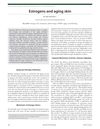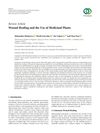A Modeling Conundrum: Murine Models for Cutaneous Wound Healing
March 2018
in “
Journal of Investigative Dermatology
”
TLDR Current murine models need improvement for better human wound healing research translation.
The document discussed the challenges of using murine models for studying cutaneous wound healing and translating findings to human conditions. It highlighted the complexity of wound healing, involving multiple cell types and phases, and the limitations of current murine models in predicting human outcomes. The study emphasized the need for standardization and validation of these models, considering variables like diabetes duration, animal sex, and assessment methods. It showed that different parameters of wound healing were affected at different times after inducing diabetes in rats, suggesting that multiple assessment methods and longer diabetes duration were necessary for accurate model validation. The influence of microbiomes and environmental factors on wound healing was noted, advocating for polymicrobial models to better mimic human conditions. Additionally, the document discussed the impact of aging and hormonal influences, particularly estrogen and testosterone, on wound healing. Overall, it called for improved preclinical models to enhance the translation of research into effective human therapies.



